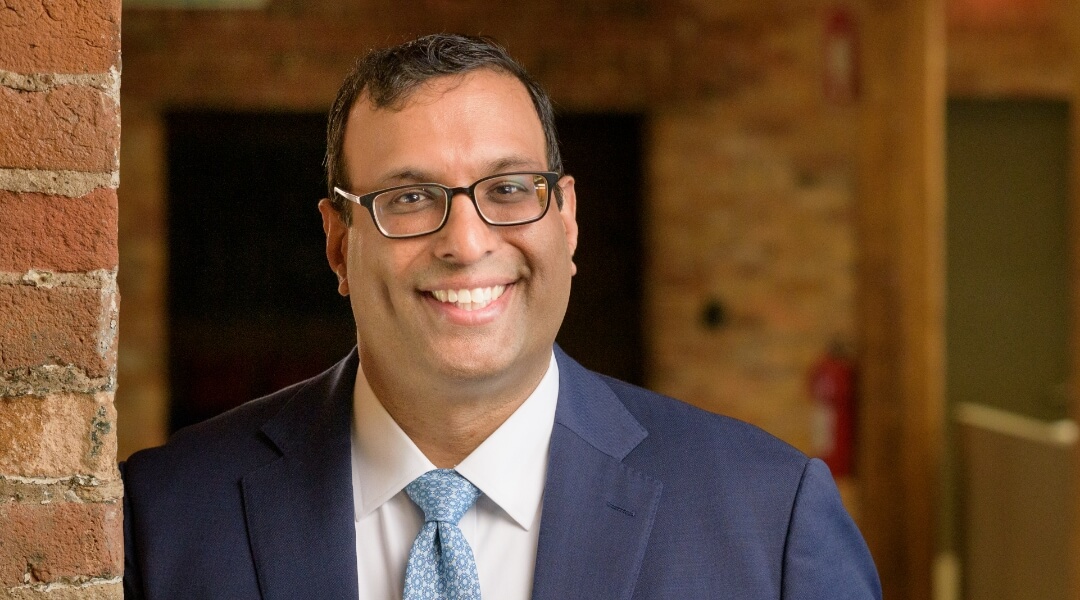In a world defined by exponential change, leaders can seize competitive advantage by honing how their organization makes decisions.
Leaders in business today face a sobering reality: the rate of technological and societal change is accelerating exponentially. This acceleration follows the same compounding pattern that Gordon Moore identified over half a century ago, in which the number of transistors on a microchip doubles about every two years with a minimal cost increase. With the advent of artificial intelligence, we’re facing a period like the commercialization of electricity. AI can amplify our collective intelligence – the very engine that powers innovation across every domain – creating a self-reinforcing cycle that makes Moore’s Law look linear by comparison.
In his famous 2001 essay, ‘The Law of Accelerating Returns,’ Ray Kurzweil pointed that “the rate of progress in any evolutionary learning environment (a system that learns via trial and error over time) increases exponentially. The more advanced a system that improves through iterative learning becomes, the faster it can progress.”
As Kurzweil put it: we won’t experience 100 years of progress in the 21st century – it will be more like 20,000 years of progress at the rate we’ve been used to. That’s the reality facing leaders today.
Exponential change curves
If we’re not alert to the pattern, exponential change can completely mislead us. Early on, very little seems to be happening (indeed, often very little is happening) – but that is often the optimal time to take action. One of my favorite examples is a brain teaser offered by the Washington Post’s Megan McArdle. In a pond, there is a single lily pad. This species reproduces once a day, so that on day two, there are two lily pads; on day three, four pads, and so on. The question is this: if it takes the lily pads 48 days to cover the pond completely, how long will it take for the pond to be covered halfway?
The answer is 47 days. Moreover, at day 40, you’ll barely know the lily pads are there.
People find linear change straightforward. But to anticipate and appropriately react to exponential change requires a different way of looking at the world – and the courage to make different decisions than you would if you were looking at linear phenomena.
An example of such a strategic decision would be Facebook’s acquisition of Instagram. At the time, critics mocked Mark Zuckerberg’s decision to spend a cool $1 billion to acquire a 13-person company with no revenue. Founded by Kevin Systrom and Mike Krieger in October 2010, Instagram’s initial growth wasn’t particularly inspiring. At the start of 2012, the software only worked on Apple IoS devices, had 50 million users, and wasn’t making any money. But on April 3, 2012, Instagram for Android was released: it was downloaded more than a million times in one day. Facebook bought Instagram just six days later. By 2018, it had attracted a billion users – and by 2024, Instagram was generating $51.4 billion in revenue (almost 45% of Facebook’s total), and had over 2 billion users. Had Facebook not taken action in light of an exponentially growing competitor, it could well have lost its dominant position in social media.
Even physical products are adding an exponential dimension
It’s easy to see how digital products could enjoy exponential dynamics. But now digital technologies are adding an exponential flavor to physical products. The result is that exponential phenomena are creeping into more and more corners of our everyday lives. For example, Penske, the massive truck leasing company with over 446,000 vehicles in its fleet, has for some time now been using digital technologies for fleet management. A recent innovation is an AI powered platform called Catalyst AI. It leverages advanced machine-learning algorithms and live data collection to provide customized operational key performance indicator benchmarks in real time. This is a game changer.
Instead of relying on annual historical benchmark data to inform decisions about fleet management, procurement and other critical operations, Penske can integrate over 57 billion points of data from its own databases and real-time information generated by its trucks to provide better information at the touch of a button. In place of the traditional lagging information, the new platform creates actionable leading indicators in real time.
Catalyst AI is exactly the kind of trial-and-error learning system that speeds up progress exponentially, to the point at which fleets that are not using the system may well find themselves at a competitive disadvantage: other users will shave precious time off their daily operations and anticipate problems in advance. From strategic considerations (where should we be planning to run our fleets along new transportation corridors?) to more prosaic ones (what should we be doing about truck idle times?), the system provides scenarios and answers that would be impossible for humans to replicate.
Accelerating high-quality decision-making
As Colin Bryar and Bill Carr point out in their book about Amazon, Working Backwards, “all other things being equal, the organization that moves faster will innovate more, simply because it will be able to conduct a higher number of experiments per unit of time.” To do this well, the “clock speed” of an organization’s ability to make decisions needs to increase.
In his 2016 letter to shareholders, Jeff Bezos highlighted the critical difference between “Day 1” companies (constantly innovating and growing) and “Day 2” companies (harvesting previous innovations): decision velocity. While both may make high-quality decisions, Day 2 companies make them slowly and methodically, using linear extrapolations from the past.
Bezos advocates for an approach to decision-making that differs from the conventional consensus-driven or authority-driven approach most organizations take. It’s defined by three powerful principles.
1. Type 1 versus Type 2 decisions Not all decisions deserve the same process. Type 1 decisions – irreversible and high-stakes – warrant thorough deliberation. Type 2 decisions – reversible “two-way doors” – should use “permissionless” lightweight processes, followed by rapid implementation.
2. The 70% information threshold Most decisions should be made with around 70% of desired information. Waiting for 90% certainty creates costly delays while adding marginal value. Colin Powell, the former chairman of the US military’s Joint Chiefs of Staff, had a similar rule which he called the 40/70 rule. He would strive to not decide with less than 40% of the information needed, then ultimately make the decision when he had, at most, 70% of the information.
3. Disagree and commit This powerful phrase enables teams to move forward despite incomplete consensus. When conviction exists but unanimity doesn’t, explicitly asking team members to “gamble with me on it” allows progress without requiring perfect agreement.
What are the other practices for mastering velocity through high-quality decision making?
Parallel decision-making
Traditional organizations route decisions sequentially through layers of authority, functions and controls. This creates bottlenecks and delays: people juggle multiple projects while waiting for inputs from others.
More effective organizations are adopting approaches that let decisions get made in parallel. For instance, at Fidelity Private Investment, then-vice president Kathleen Murphy did an analysis of how work was being done in the business’s traditional model. She was astonished to discover that a typical person in her operation was working on as many as ten projects at once. They spent ridiculous amounts of time waiting for input from other people and attending meetings just to coordinate activities.
As an experiment, she created teams that had all the functional skills needed to accomplish a clear, given objective, and had them working together on just one project, which they could focus on fully. The result? A reduction in the time it took to deliver a software application by 75% compared with the previous way of working.
Carefully define the problem
We tend to forget that the quality of a decision can only be as good as the best option considered. Very often, people jump to solutions without investing sufficient time in defining the true problem being faced. Do you know the problem you’re trying to solve? Proactively reframing the problem and generating a wide range of possible options is helpful. This includes practices such as bringing outsiders into the conversation, spending time defining the issues in writing (and seeing how people define them differently), understanding what might be missing, and looking creatively for other contexts in which similar problems have been resolved.
AI can be extremely helpful in the problem definition phase. It has been shown that AI systems are better than people at suggesting counterfactuals to events that have actually occurred. This helps prompt consideration of multiple alternatives, and can provide a safe space to practice. It’s like a flight simulator for decision making, before the decision is let loose in the real world. And, using AI, the process by which more experienced people make decisions can be made explicit, showing the thought process to younger or less experienced colleagues.
Access unfiltered information from the edges
In many large bureaucracies, information is hard to get, the complete picture is hard to see, and information is often distorted or even manipulated. It is often incredibly difficult to get a single version of the truth. In organizations designed for speed, every material activity is instrumented in some way, metrics are tracked, and teams are able to self-manage the information that is uncovered.
Effective leaders get unfiltered information from the external world rather than relying on indirect measures or reports which may well not be representative of the truth. Bezos famously called Amazon’s own call center in the midst of a management meeting. The four-minute wait betrayed the one-minute version reported to him.
At Best Buy, upon becoming CEO, Hubert Joly spent his first few weeks wearing a blue shirt and working in the stores, seeking unfiltered information from the people who knew customers best.
Foster constructive disagreement
Combating the tendency for human groups to seek consensus and avoid conflict is a huge challenge. Famed investor Ray Dalio is well known for his radical encouragement of disagreement. As he says in his “principles” manifesto, “When two people believe opposite things, chances are that one of them is wrong. It pays to find out if that someone is you. That’s why I believe you must appreciate and develop the art of thoughtful disagreement.”
Dalio even uses an app (developed by one of his companies) called Dot Collector, which allows people to express their views and see others’ thoughts in real time, helping them collectively reach an idea-meritocratic decision.
Test hypotheses through experimentation
A first principle of designing a business experiment is that you need to spell out what hypothesis, guess, or assumption you want to test, and what metrics will tell you what you learned. I see way too many people rushing willy-nilly into designing surveys or interview protocols without clearly identifying what they hope to learn and what evidence they’ll need. People also tend to invest in big, expensive programs, when often an inexpensive experiment will provide a good answer.
Develop shared consciousness
As Airbnb chief executive Brian Chesky notes, effective organizations “pull decision-making in” rather than pushing it down. This creates a collective understanding of context, purpose and strategy. This approach increases transparency, allows for clear guiding principles and embraces continuous sense-making conversations. At Airbnb, key leaders spend 10-20 hours weekly in meetings together, creating what Chesky calls “one shared consciousness” where they can “finish each other’s sentences.” This approach, inspired by Apple’s Steve Jobs (who reportedly spent 35 hours weekly with his leadership team), creates alignment without disempowering teams.
Fundamental shifts
Accelerating decision velocity requires some fundamental shifts. It involves breaking large, complex issues into modular pieces that small teams can tackle rapidly. As Bezos has said, this may well create some redundancy in activities, but that costs far less than losing time with slow decisions.
There also needs to be enough organizational slack that teams can take their time on careful problem definition. Systems that facilitate resilience by supporting experimentation and quick course correction are helpful – and of course, leaders who model fast, high-quality decision-making, and who are not afraid of learning from intelligent failures, are critical.
Organizations that become masters of velocity have the potential to capture crucial transient advantages over competitors trapped in decision paralysis.




